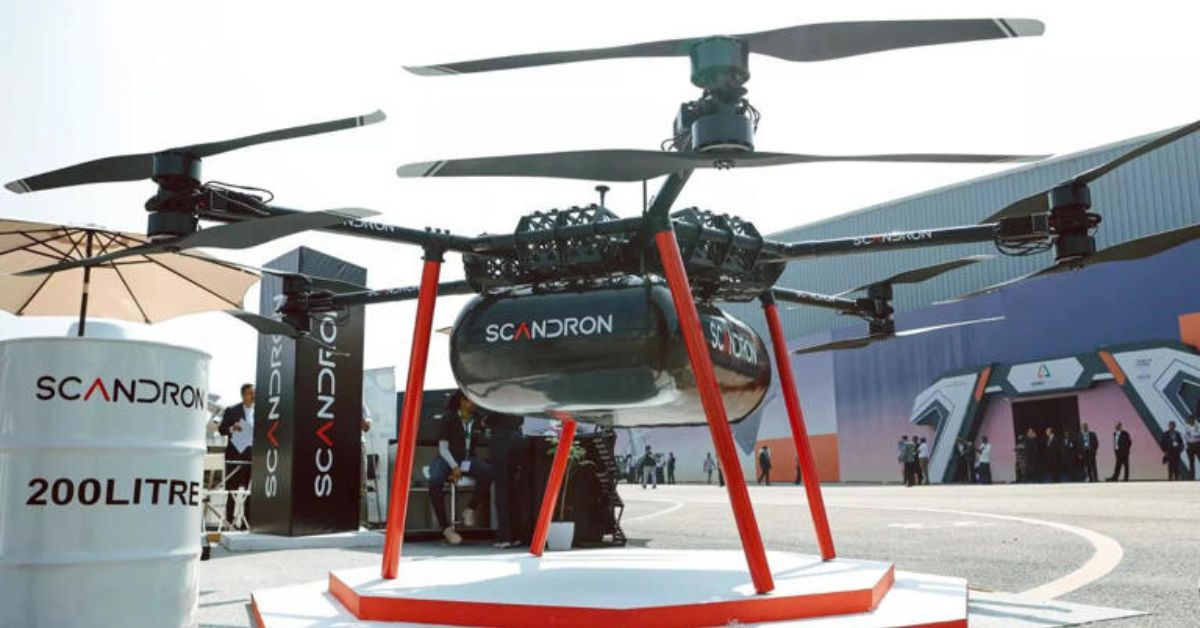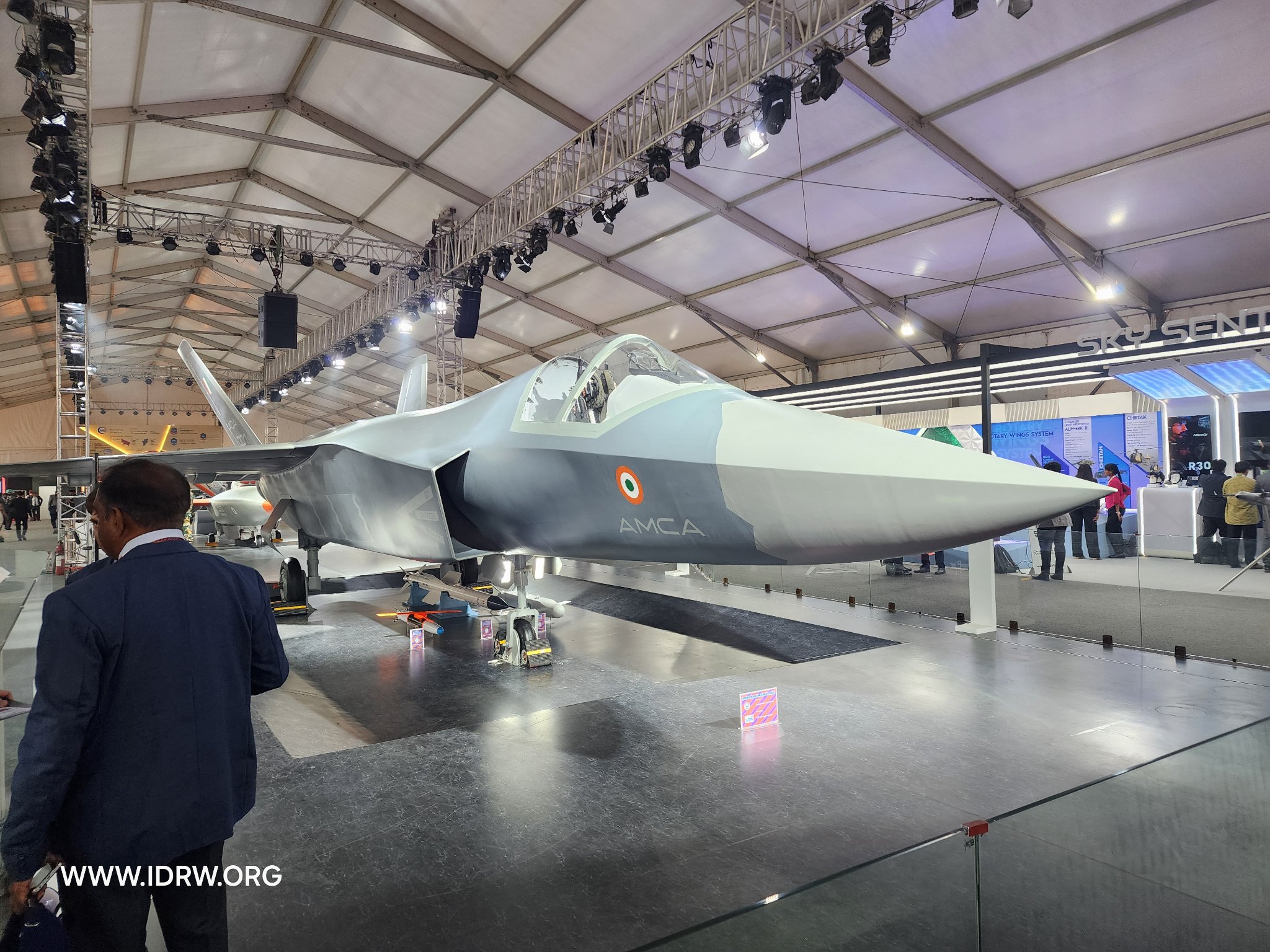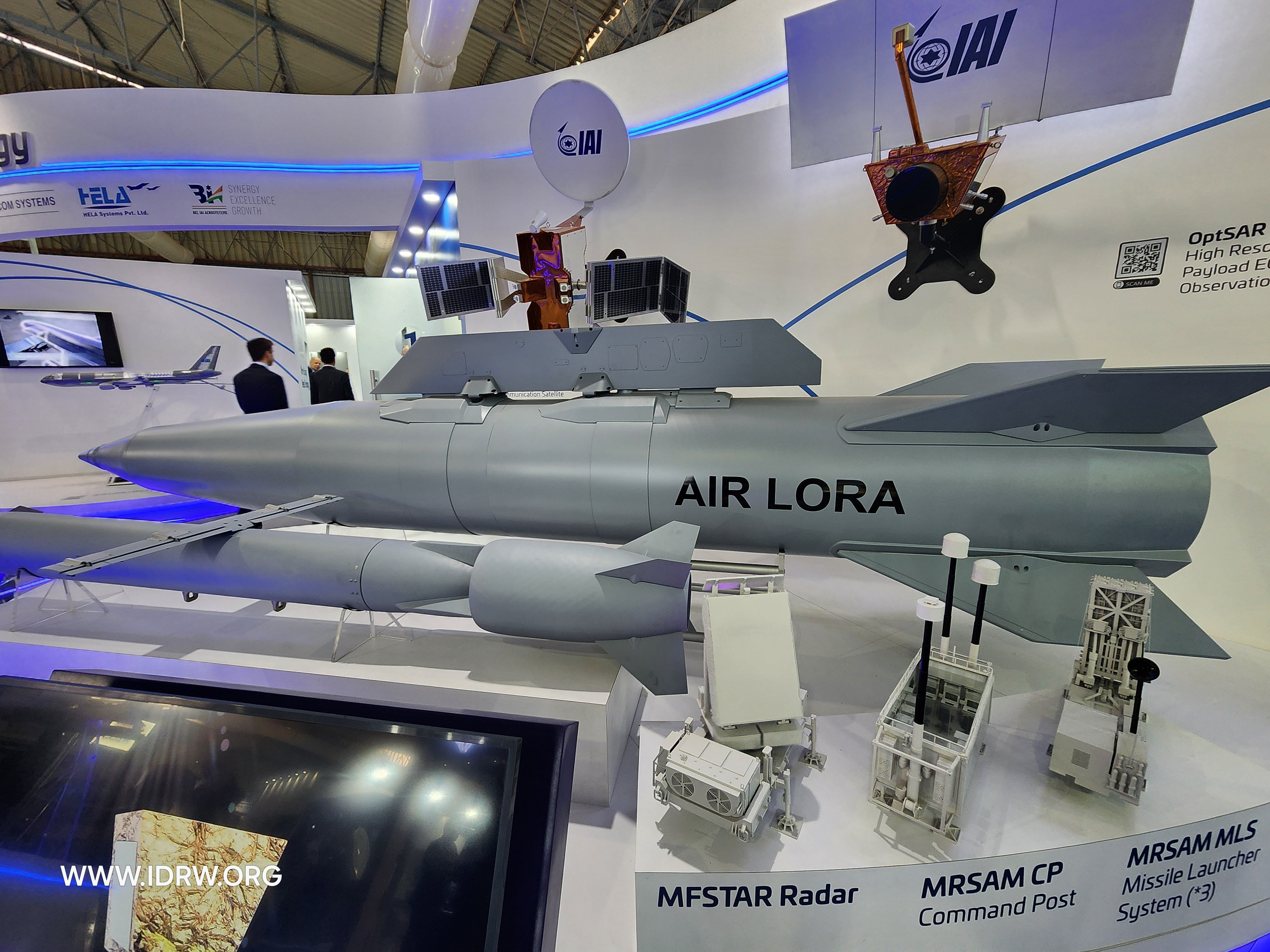SOURCE: AFI


In a landmark achievement for India’s burgeoning defense sector, Bengaluru-based startup Flying Wedge Defence and Aerospace (FWDA) has announced its first international export order for 35 units of the FWD 100 ISR (Intelligence, Surveillance, and Reconnaissance) autonomous aircraft. This deal, signed with a Sub-Saharan nation whose name remains undisclosed, marks the first time an entirely indigenous Indian autonomous aircraft has penetrated the international market.
The FWD 100 ISR, a sub-variant of the previously successful FWD 200B, is a testament to India’s growing prowess in aerospace innovation. Designed, developed, and manufactured at FWDA’s state-of-the-art facility in Electronic City, Bengaluru, this aircraft is a beacon of India’s capability to produce world-class defense technology.
Continue readingSOURCE: AFI


India is in the final stages of negotiations for the export of BrahMos supersonic cruise missiles to a foreign country, with a formal contract expected to be signed later this year. While Indonesia was widely speculated to be the second customer after the Philippines, recent media reports suggest that the deal in progress is with a different nation.
The land-based version of the BrahMos missile has recently attracted attention from several Middle Eastern countries. Sources indicate that the evolving geopolitical situation has prompted multiple nations to explore neutral suppliers like India for advanced weaponry, reducing their dependence on traditional arms suppliers.
Continue readingSOURCE: AFI


Chief of Defence Staff (CDS) General Anil Chauhan has expressed skepticism over China’s claims regarding its sixth-generation fighter aircraft, asserting that such platforms are still in the developmental stage globally. Speaking on the matter, CDS Chauhan highlighted that multiple countries are actively pursuing sixth-generation programs, but none have yet reached full operational capability.
“My understanding of a sixth-generation aircraft is that there is no globally accepted definition of what constitutes one. Essentially, a sixth-generation aircraft is a platform that integrates both manned and unmanned teaming. It acts as an aerial command post capable of controlling two to three similar assets,” said CDS Chauhan.
Continue readingSOURCE: AFI


In a significant boost to India’s drone technology sector, Bengaluru-based startup Scandron introduced the CargoMax 20KHC at the Aero India 2025 air show. This drone, heralded as India’s most powerful cargo drone to date, marks a new chapter in the country’s push for self-reliance in aerospace and defense technologies.
The CargoMax 20KHC is not just another drone; it’s a fully autonomous aerial logistics platform designed to carry an impressive payload of 200 kilograms. Its primary applications are targeted at defense logistics, commercial logistics, and disaster relief operations, showcasing its versatility across various sectors.
Continue readingSOURCE: RAUNAK KUNDE / NEWS BEAT / IDRW.ORG


In an exclusive update, ADA (Aeronautical Development Agency) officials have confirmed to idrw.org that the four Tejas MkII Pre-Production Prototypes will be rolled out by Hindustan Aeronautics Limited (HAL) over the next 2-3 years. These aircraft will play a crucial role in the development and certification process, paving the way for production clearance by 2029.
The tentative rollout schedule, as shared by ADA officials, begins with the first Tejas MkII prototype set to be rolled out by the end of 2025. The second prototype is expected to follow in late 2026, with the third prototype slated for release by mid-2027. The fourth and final prototype will be unveiled by the end of 2027 or early 2028, marking the final step in the pre-production phase.
Continue readingSOURCE: RAUNAK KUNDE / NEWS BEAT / IDRW.ORG


In an exclusive update to idrw.org, an official from the Gas Turbine Research Establishment (GTRE) has confirmed that discussions are ongoing for the co-development of a new 110kN engine for the 5.5 generation fighter jet, specifically for the Advanced Medium Combat Aircraft (AMCA). The talks are progressing with major aerospace companies, and a decision on selecting a vendor is expected soon.
According to the GTRE official, negotiations with global aerospace giants Rolls-Royce and Safran are in the advanced stages. GTRE is set to send its recommendations to the Indian Air Force (IAF) and the Ministry of Defence (MoD) shortly, which will determine the future direction of the engine program.
Continue readingSOURCE: RAUNAK KUNDE / NEWS BEAT / IDRW.ORG


Sameer Joshi, CEO and Director of Newspace Research & Technologies Private Limited, has officially unveiled the Sheshnag 150 Long Range Swarm Drone in an exciting announcement. Joshi showcased an image of the drone while in flight, confirming that the first successful flight of this groundbreaking weapon system has been completed.
The Sheshnag 150 is a 150kg advanced swarm-capable asset designed to revolutionize warfare strategies. Its long-range capabilities and flexibility position it as a game-changer in modern combat. This drone system is built to perform attritable warfare by creating mass and saturation attacks, making it ideal for large-scale, autonomous, or semi-autonomous missions.
Continue readingSOURCE: AFI


Officials from Hindustan Aeronautics Limited (HAL) have confirmed that the first HTT-40 (Hindustan Turbo Trainer-40) Stage I Basic Trainer Aircraft (BTA) for the Indian Air Force (IAF) will be rolled out from the Nashik plant in September 2025. The production of the HTT-40 is currently underway at both the Nashik and Bangalore plants, as the company gears up for the delivery of this crucial training aircraft.
The HTT-40 is designed to serve as a primary training aircraft for IAF pilots, offering them a reliable and cost-effective platform for basic flight training. The aircraft features advanced avionics, a robust airframe, and a powerful engine, ensuring high performance and safety for trainee pilots. The Stage I configuration will be the initial variant of the HTT-40, with further developments anticipated in the future.
Continue readingSOURCE: AFI


At the ongoing Aero India 2025, Israel Aerospace Industries (IAI) has unveiled its cutting-edge AIR LORA Deep Stand-Off Air-Launched Ballistic Missile (ALBM), an advanced weapon system designed to meet the growing demands of modern aerial warfare. IAI officials confirmed to idrw.org that the AIR LORA is now available for India, offering an unprecedented level of precision and operational flexibility for the Indian Air Force (IAF).
The AIR LORA missile, a member of the combat-proven LORA family, is designed to strike high-value, well-protected targets with exceptional accuracy. This includes command centers, air force bases, critical infrastructure, and naval vessels in densely populated littoral regions. AIR LORA is tailored to address modern battlefield challenges, providing a powerful solution for long-range precision strikes.
Continue readingSOURCE: AFI


At Aero India 2025 in Bengaluru, a Hubballi-based startup, Astr Defence, unveiled its innovative ‘Chakra Trap’, a handheld hard-kill system designed to counter unmanned aerial vehicles (UAVs). The system offers a unique, non-electronic solution for neutralizing hostile drones by physically capturing and disabling them, setting it apart from conventional counter-UAV technologies.
CEO of Astr Defence, Ankush Koravi, explained that the Chakra Trap uses a grenade-based projectile that deploys a high-tensile net to entangle the propellers of drones, rendering them inoperable. This mechanism provides a reliable method of neutralizing drones, particularly in environments where traditional soft-kill systems, such as jamming, fail to be effective.
Continue readingSOURCE: AFI


During his visit to Aero India 2025, General Upendra Dwivedi, Chief of Army Staff (COAS), was briefed on the capabilities of the H125 reconnaissance-class helicopter at Air Force Station, Yelahanka. The H125 is a product of a joint venture between TATA and Airbus, and it plays a significant role in advancing India’s defense capabilities in line with the Atmanirbhar Bharat initiative, which focuses on strengthening self-reliance in defense manufacturing.
The H125 is a multi-role, light utility helicopter designed for reconnaissance, surveillance, and various tactical operations. Its flexibility makes it an ideal choice for missions in diverse terrains, particularly in challenging and remote areas where heavier aircraft cannot operate efficiently.
Continue readingSOURCE: IDRW.ORG


In a significant development at Aero India 2025, Russia has offered India the advanced engine powering its latest stealth fighter, the Sukhoi-57, for the upgrade program of the Indian Air Force’s (IAF) existing Sukhoi-30MKI fleet. The proposal has the potential to enhance the performance of the IAF’s largest fleet of fighter jets, bringing them closer to cutting-edge stealth and operational capabilities.
Currently, the Sukhoi-30MKI fleet is powered by the AL-31 engine, which is renowned for its performance and reliability. However, the AL-41 engine used in the Sukhoi-57, Russia’s fifth-generation stealth fighter, offers a significant leap in terms of power, thrust, and overall efficiency. The AL-41 engine boasts improved thrust-to-weight ratio, better fuel efficiency, and enhanced maneuverability, making it a suitable upgrade for the Sukhoi-30MKI aircraft, which has been a backbone of the IAF’s fleet for over two decades.
Continue readingSOURCE: IDRW.ORG


At Aero India 2025, a significant milestone in India’s defense technology was unveiled with the showcase of an Indigenous Very High Frequency (VHF) Radar system. Operating within the VHF band (30 to 300 MHz), this radar is designed to detect very low observable (VLO) aircraft—such as stealth fighters—that are engineered to evade conventional radar systems. This advanced system enhances India’s radar capabilities, providing a key advantage in countering modern aerial threats.
The VHF radar’s range has been confirmed to idrw.org as an impressive 400 km, a considerable achievement for a truck-based mobile VHF radar system. The ability to detect aircraft at this range enables it to provide early warning and surveillance capabilities over a vast area, significantly strengthening air defense networks. This range is particularly valuable for monitoring and tracking aircraft in both defensive and offensive operations.
Continue readingSOURCE: AFI


At Aero India 2025, Sergey Bogdan, one of Russia’s most skilled test pilots, made headlines not only for his remarkable display of the Su-57 fighter jet but also for an intriguing revelation. The renowned pilot, known for his role in the development and demonstration of advanced Russian military aircraft, claimed that Hollywood’s blockbuster Top Gun: Maverick had “stolen” one of his signature aerial maneuvers—without giving him any credit.
The maneuver in question is a dramatic, high-stakes aerial dogfight tactic, where one aircraft performs a spiral descent while the other attempts to shoot ahead. Bogdan explained that he first demonstrated this maneuver at the Maks Airshow in Moscow, during a dogfight demonstration, showcasing the aircraft’s ability to execute extreme angles of attack, rapidly decelerate, and transition to low speeds.
Continue readingSOURCE: AFI


At Aero India 2025, Safran Helicopter Engines unveiled its latest breakthrough, the Aravalli engine, developed as part of the SAF-HAL joint venture. This new engine has been selected to power the Indian Multi-Role Helicopter (IMRH), a next-generation, 13-ton multi-role helicopter designed by Hindustan Aeronautics Limited (HAL) to fulfill the diverse operational needs of the Indian Armed Forces. Additionally, a naval variant, the Deck-Based Multi-Role Helicopter (DBMRH), which weighs 12.5 tons, is also under development specifically for the Indian Navy.
Named after the Aravalli mountain range in north-west India, the Aravalli engine continues a longstanding tradition by Safran of naming their helicopter engines after mountains, peaks, and lakes, further cementing the significance of this new development in both the technological and cultural context. The name reflects the engine’s capabilities, symbolizing high performance, strength, and reliability — key attributes that will be essential for the Indian military’s operations.
Continue reading